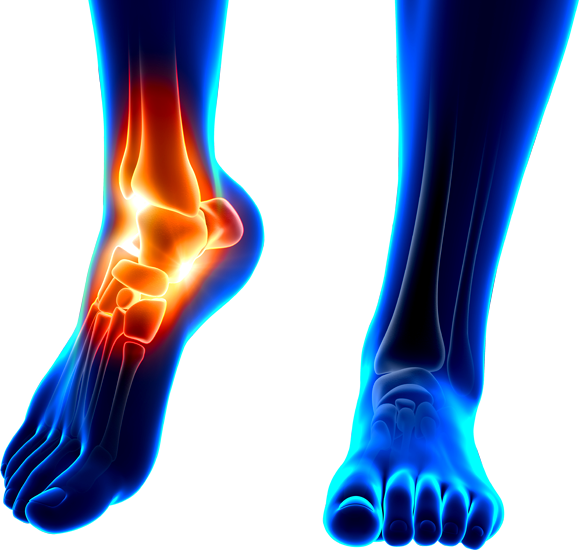Leeds Foot & Ankle Clinic
Experts in foot and ankle surgery

Ankle Fusion Surgery.
What is Ankle Fusion Surgery?
Ankle fusion surgery, also known as ankle arthrodesis, is a surgical procedure performed to treat severe ankle arthritis or significant ankle deformities that cause chronic pain and limited mobility. The surgery involves fusing the bones of the ankle joint together, which eliminates the joint space and creates a solid bone union.
Why is Ankle Fusion Surgery Performed?
Ankle fusion surgery is typically recommended when other non-surgical treatments, such as medication, physiotherapy, bracing and activity modification have failed to provide sufficient relief. The procedure aims to alleviate pain, improve stability, and enhance function in the ankle joint. It can be suitable for patients with conditions like:
- Severe ankle osteoarthritis
- Rheumatoid arthritis affecting the ankle
- Failed ankle joint replacement
- Ankle joint deformities
- Trauma to the ankle joint that has caused irreparable damage to the ankle joint cartilage causing post traumatic ankle arthritis
What does the procedure involve?
Ankle fusion surgery is typically performed under general anaesthesia, meaning you will be asleep throughout the procedure. You will have some nerve injections performed (nerve blocks) to temporarily numb the nerves to the leg and foot meaning you will be comfortable when you wake up.
The surgeon will make an incision over the ankle joint, and the damaged cartilage within the joint will be removed. This is often done using arthroscopic (key hole) techniques to minimise soft tissue damage. The surfaces of the ankle joint will then be prepared and positioned in such a way that they can fuse together. Metal screws and sometimes plates will be used to hold the bones in place during the healing process. Finally, the incision will be closed with stitches.
What is the recovery and rehabilitation period?
After surgery, you will be closely monitored in the hospital. Pain medication will be provided to manage any discomfort. You will have a boot or sometimes a cast on your leg and ankle (only below the knee) to protect it and keep it immobilised. You will need crutches to help you move around. You may need to avoid putting weight through the leg for a few weeks.
Follow these guidelines for a successful recovery:
- Keep your foot elevated to reduce swelling.
- Take prescribed pain medications as directed and at regular intervals.
- Use crutches or a walker to avoid putting weight on your foot until instructed otherwise by your surgeon.
- Attend all scheduled follow-up appointments to monitor your progress and remove stitches or staples when necessary.
What are the risks and complications of ankle fusion surgery?
What are the risks and complications of ankle fusion surgery?
- Infection
- Delayed bone healing or failure of the bone to fuse (bond together), called “non-union”
- Blood clots (DVT / PE)
- Nerve or blood vessel damage
- Stiffness or limited range of motion in other joints around the ankle fusion
- Continued pain or persistent swelling
These risks will be discussed with you before undergoing the procedure
How long will it take for me to improve after the surgery?
You will spend around 8 to 12 weeks after the surgery in some form of walking aid around the ankle. Occasionally this will be a plaster cast for a few weeks but more often a removable boot is used from immediately after the procedure. You will begin to take some weight through the leg from around 2 weeks after the procedure. You are likely to be able to fully bear weight from around 6-10 weeks after the procedure. You will be given some crutches or a walking frame to help you get around.
The boot can be removed at rest and at night as soon as you feel comfortable to do so, usually from around 2 weeks after the procedure. You are likely to begin walking without the boot from around 8-10 weeks post procedure, using comfortable trainers or boots.
Most people take between 4-6 months to recover from the operation, and around 9-12 months for the residual swelling to settle and for your full strength to return.